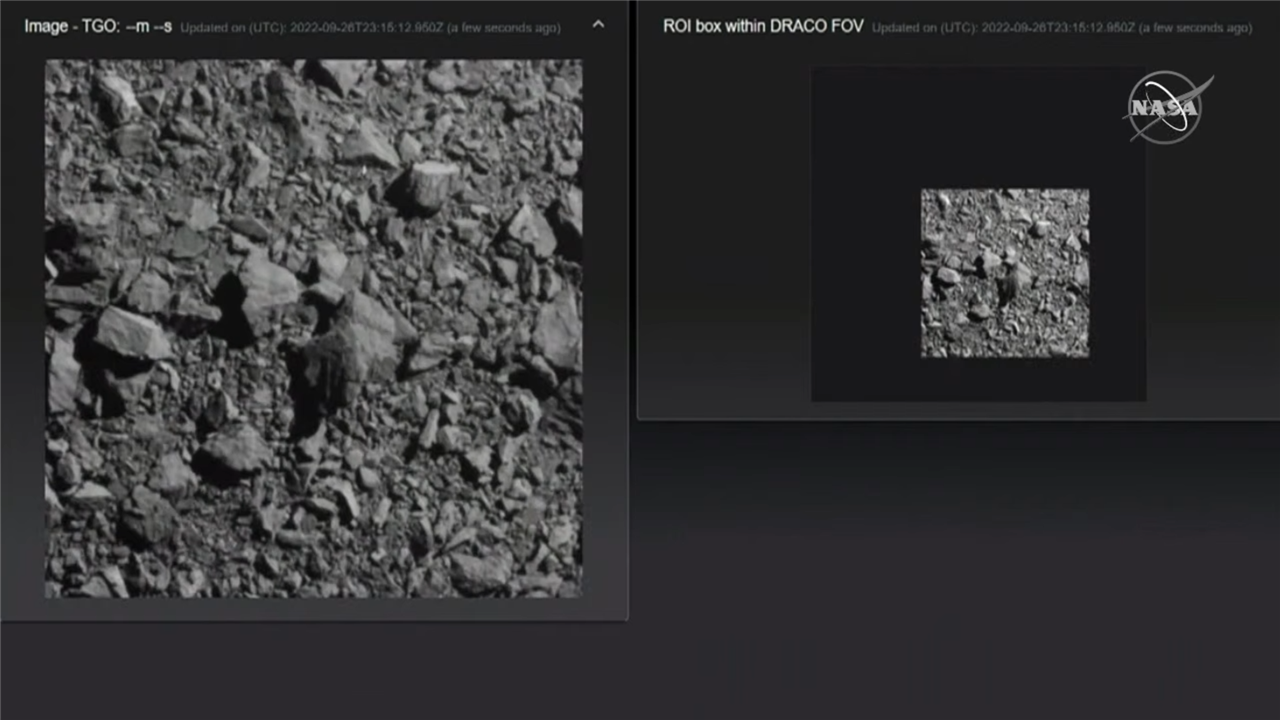
The final 20 seconds of the DART mission before crashing into the asteroid. (Image Credit: NASA)
NASA's Double Asteroid Redirection Test (DART) spacecraft, traveling at 13,421 miles per hour, successfully crashed into the Dimorphos asteroid, located 6.8 million miles from Earth! The overall goal involved altering the asteroid's path and speed. "In case you're keeping score: humanity 1, asteroids 0," Tahira Allen, a NASA spokesperson, said during the live stream. ATLAS offered a different perspective of the impact, showing the effects as gravel blew off.
This mission serves as NASA's first demonstration of its planetary-defense program to prevent dangerous asteroids from plummeting into the planet. Even though it's not heading toward Earth, NASA targeted this particular asteroid to test a deflection technique. Interestingly, the team behind this mission said it was similar to a golf cart colliding into one of the Great Pyramids. Scientists say this impact should nudge Dimorphos, making it bound to Didymos' gravitational pull.
Worldwide ground-based optical and radar telescopes are set to study the asteroid system to determine if DART altered Dimorphos' orbital path around Didymos. The original orbital time lasted 12 hours, but NASA thinks it could be shortened to several minutes. The JWST, Hubble, and NASA's Lucy mission will observe the post-collision target. ESA's Hera mission, launching in 2024, is designed to observe the impact.

The DART's final full image before crashing into Dimorphos. (Image Credit: NASA)
LICIACube, an Italian satellite, will take images and video of Dimorphos' impact plume spewing out. It's also expected to peek at the asteroid's opposite hemisphere that DART didn't view. The CubeSat's first images of Dimorphos will release days, weeks, and months following the DART collision. We should see the impact site and plume in the first images captured by LICIACube.
"We're embarking on a new era of humankind, an era in which we potentially have the capability to protect ourselves from something like a dangerous, hazardous asteroid impact," said Lori Glaze, director of NASA's Planetary Science Division. "What an amazing thing. We've never had that capability before."
You don't need to see the whole video, as I link below here. But, you can fast-forward towards the end to see Dart's final moments.
(UPDATED) You can see DART crash via ATLAS via this twitter link.
Have a story tip? Message me at: http://twitter.com/Cabe_Atwell
